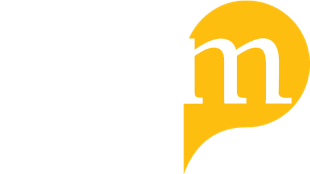Subscribe to Open for Journal Publishers
Project MUSE > Subscribe to Open > Publishers

Subscribe to Open (S2O) offers journal publishers a model to expand the reach and impact of their scholarly content. By participating in S2O, publishers can transition that year’s journal content to open access without sacrificing financial stability. This model leverages library and institutional subscriptions to sustain open access, ensuring that high-quality research is freely available to a global audience.
Beginning in 2025, in any year that the S2O program is successful, all new content from participating journals will be open access immediately upon publication. Joining Subscribe to Open contributes to a more equitable and accessible scholarly publishing ecosystem, increases each journal's visibility, and supports the advancement of knowledge across disciplines.
Participating Publishers & Journals in 2025
View the full list of journal publishers who have committed at least one title to participate in the MUSE Subscribe to Open program, beginning in 2025.
Join Our S2O ProgramPromote Our S2O Program
Publishers can support the S2O program by leveraging the comprehensive promotional toolkit we have created. This toolkit includes a variety of resources such as email templates, digital assets, social media graphics, and resources to help publishers effectively communicate the benefits of S2O to their audience. By utilizing these materials, publishers can highlight the importance of supporting open access initiatives, demonstrate their commitment to equitable access to scholarly content, and encourage libraries and institutions to participate in this innovative and sustainable subscription model. Promoting the S2O program not only enhances visibility and engagement but also reinforces the publisher's role in advancing open access and scholarly communication.
Download our promotional toolkit here.
Download ToolkitFrequently Asked Questions for Publishers
To help publishers navigate and understand the Subscribe to Open (S2O) model, we've compiled answers to the most frequently asked questions about its implementation, benefits, and best practices.
Which journals are participating in the S2O program on MUSE?
We are asking publishers to formalize their journals’ participation in the S2O program before the end of the calendar year. The titles that choose to participate in S2O will continue to be included in their current MUSE collection(s) along with the conventional subscription journals.
What journals are eligible to participate in MUSE’s S2O program?
Participation in the S2O program is open to any actively-publishing, full-royalty journal in the MUSE Journal Collections. Virtually any title seeking broad, immediate access to its research will benefit from participating in the program. MUSE’s S2O program provides a way to open access to the current content of journals on any subject, in any discipline, and with any type of audience.
Must a publisher include all of its journals in the S2O program to participate?
No, a publisher can include some or all its journals in the program if they are actively publishing, full-royalty journals. However, only titles participating in the S2O program will qualify for the S2O minimum payment guarantee.
Will back issues of S2O journals eventually become open access on MUSE?
No. Licensed access to valuable journal backfile content provides an incentive for libraries to continue to subscribe to MUSE. The S2O program will not open the backfile years.
Will S2O participation affect the value of a journal as a benefit of society membership?
No. Under S2O, members need to maintain their memberships to get access to the back issues of a society’s journal, as well as current issues in any year where the S2O program is undersubscribed. Thus, the journal remains a key benefit of membership. The percentage of society members indicating that their membership would be more valuable if their society journals converted to OA continues to increase.
Providing an open access publishing option to society member authors is an additional benefit of S2O.
How can a publisher explain the benefits of S2O participation to journal stakeholders?
Publishers may need to reassure stakeholders that open access through S2O presents minimal risk to a journal’s financial stability. The MUSE S2O program is designed to maintain MUSE revenue by establishing a 98% sustainability threshold and supporting publisher revenue through guaranteed minimum royalties .
Publishers may also need to convince some stakeholders of the benefits of open access. Researcher surveys indicate that the number of researchers perceiving OA positively and the proportion of authors electing to publish open access has been growing steadily from year to year. Increasingly, authors recognize the benefits of open access for research reach, impact, and increased citations.
Must a journal that participates in the S2O offer be Open Access on other distribution platforms?
No. MUSE will assign current articles in S2O journals the Creative Commons license selected by the publisher. As a result, the S2O articles will be available open access under that license. At the same time, a publisher may license its copyright or distribute articles under more than one set of terms. For example, a publisher might publish a print edition that imposes copyright restrictions on use.
While MUSE cannot compel or control whether a publisher assigns the same license everywhere an article appears, once a CC license is applied to an article in one format, the article may be used in any other format or medium. See the Creative Commons web site for more details.
Will more titles be added to the MUSE S2O program over time?
Yes. MUSE will continue to recruit additional titles to participate in the S2O program, on an annual basis.
Can journals in the Project MUSE hosting program participate in S2O?
MUSE cannot currently include journals from its hosting program in the S2O program. However, MUSE is evaluating a separate S2O solution for hosted titles.
How will publisher royalties for the S2O journals be calculated?
The S2O program will significantly increase the use of participating journals, which would skew the royalty distribution under MUSE’s current royalty policy. To address this, royalties for the S2O journals will be allocated based on each journal’s average royalty share over a five year period. For all other journals, the current royalty model will remain in effect. This will ensure the equitable distribution of royalties for both S2O and conventional MUSE titles.
MUSE’s S2O program requires the upfront, continuing support of subscribers. As a result, MUSE’s revenue should be unaffected by the S2O offer. While the guarantee ensures that a journal generates the same royalty as it has in the past, it does not limit any growth in royalties. Royalties will continue to increase at the same pace as MUSE subscription revenue for both S2O and conventional collection journals.
MUSE will guarantee that journals participating in the initial S2O offer will earn royalties no less than their average royalty for the most recent five years. This guarantee will apply to journals that formally commit to the S2O program by June 2024 and will extend for the first three years of the program. Journals committing to the program for participation in the 2026 S2O offer, will receive guaranteed royalties for last two years of the program. Journals committing to the program for participation in the 2027 S20 offer will receive guaranteed royalties for the last year of the program. In the event that the sustainability threshold is not achieved, and content is not published OA, all journals participating in the MUSE S2O program will still be paid royalties according to their guarantee. S2O royalties after the 2027 offer will be determined at a later date.
Publishers wishing to discuss S2O participation and guaranteed royalty amounts for their specific journals should contact MUSE Publisher Relations.
What is the MUSE S2O Publisher Minimum Payment Guarantee?
MUSE will guarantee that journals participating in the initial 2025 S2O offer will earn royalties no less than their average royalty for the most recent five years. This guarantee will apply to journals that commit to the S2O offer by June 2024, and will extend for the first three years of the offer.
In the event that the sustainability threshold is not achieved, and content is not published OA, all journals participating in the MUSE S2O program will still be paid royalties according to their guarantee.
Will MUSE help publishers make up income lost from individual-title subscription income from other sources?
There is no practical way for MUSE to guarantee publisher revenue from sources outside of MUSE’s collections. However, MUSE can provide guidance to participating publishers on how to protect subscriptions to individual journals. Such subscribers will also benefit from opening current content via MUSE’s S2O program.
When will an author know whether their article will be open under S2O?
Opening current content under S2O is contingent on the continued upfront commitment of subscribers, by the annual participation deadline for the S2O program. MUSE will communicate promptly and clearly regarding the success of the S2O program, immediately following the participation deadline. If subscription commitments reach the sustainability threshold by the deadline, MUSE will publish that year’s current content from all S2O-participating titles as open access.
What license applies to the content opened by S2O?
Project MUSE highly recommends that publishers apply a Creative Commons license to their S2O content. To satisfy author demands, we expect most of the MUSE publishers participating in S2O will give their authors the choice of several Creative Commons licenses. CC license details will be clearly displayed on article pages and included in metadata as appropriate. See the Creative Commons web site for more details.
Still have questions?
Reach out to MUSE Publisher Relations.
Contact Us About S2O


